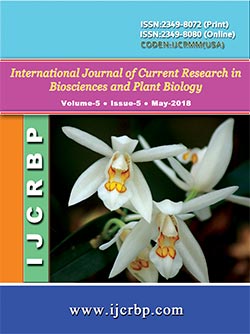 |
Online ISSN : 2349-8080 Issues : 12 per year Publisher : Excellent Publishers Email : editorinchiefijcrbp@gmail.com |
2Laboratoire de Pharmacognosie / Centre Béninois de Recherche Scientifique et Technique (CBRST/UAC), 01 BP 06 Oganla Porto-Novo / Benin
3Louvain Drug Research Institute (LDRI) / Université Catholique de Louvain (UCL) Avenue E. Mounier, 72(B1.72.03) 1200 Bruxelles-Belgique
4Center for Computational and Integrative Biology, Rutgers, the State University of New Jersey 315 Penn Street, Science Builging, Camden, NJ 08102-1411
This work provides information on the isolation and identification of two bioactive triterpenic compounds in Launaea taraxacifolia (Asteracae) and their larvicidal potential. These are oleanolic acid (OA) and lupeol. We prepared a hydro-methanolic extract of Launaea taraxacifolia leaves on which we performed a liquid-liquid fractionation with n-hexane. The hexane fraction obtained was subjected to atmospheric pressure chromatography (APC) followed by a series of TLC purifications leading to the isolation of the two triterpenes. Their identification is made by means of a straightforward HPLC-UV method of comparison and superposition with isocratic controls in binary mode. Ursolic, oleanolic and betulinic acids (Sigma) are used as controls for the OA with a mobile phase composed of 20% of H2O and 80% of a mixture ACN/MeOH (40/35, v/v) and lupeol, α-amyrin, β-amyrin (Sigma) for lupeol with a mobile phase composed of 5% H2O and 95% ACN. The flow rate was 1000 μL/min with detection at a wavelength of 210 nm. We then carried out susceptibility tests on 3rd instar Anopheles gambiae larvae from two genotypes: Kisumu strain of Kenyan origin and the wild strain from Cotonou larval breeding sites. Both triterpenoids were found to be active on both larval origins with lethal concentrations LC50 of 38.12 ppm in 24 hours and 2.50 ppm in 48 hours exposure for Kisumu strain; 32.14 ppm and 2.29 ppm respectively in 24 hours and 48 hours for the wild population for the OA. As for lupeol, we obtained LC50 of 105.16 ppm and 45.69 ppm respectively in 24 hours and 48 hours on the strain Kisumu; whereas, 103.20 ppm and 32.8 ppm respectively in 24 hours and 48 hours of contact for wild larvae with regard to lupeol.
